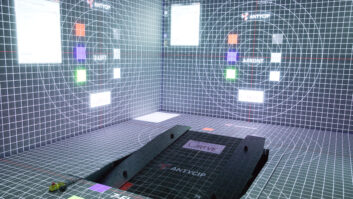 Hybrid workspace, hybrid education, hybrid events. These days, even reality seems to start becoming hybrid, thanks to the rise of XR applications and other advancements in how we interact with the world around us; or to the ones we create for ourselves.
Hybrid workspace, hybrid education, hybrid events. These days, even reality seems to start becoming hybrid, thanks to the rise of XR applications and other advancements in how we interact with the world around us; or to the ones we create for ourselves.
Contrary to common belief, it wasn’t the Covid-19 pandemic itself that triggered these changes, many of these technological shifts were already underway, although the global health emergency certainly accelerated things. Significantly.
In the past couple of years,, everyone had to adapt to this new reality. Individuals had to adapt for new routines, teams had to adapt to new practices, businesses had to adapt to new procedures, and AV professionals had to adapt to new challenges and needs from customers.
For Lightware, this meant witnessing one of its key vertical markets, the rental and live event sector, virtually disappearing from one day to the next. Lightware has been built from the ground up to be an agile company, however. As a result, the pandemic acted as a catalyst for a series of groundbreaking developments and new projects to help others adapt to the new reality, in fields where innovation was needed most.
BIG CHANGES
The corporate world saw significant changes due to the sweeping introduction of home offices, and later on the emergence of the hybrid workplace (where teams balance their workload between regularly changing home/office locations). This led to an urgent need to adopt AV operations and meeting room equipment to stand up to the challenge.
The importance of ‘Bring-Your-Own-Device’ became greater than ever, necessitating AV signal management devices that could seamlessly bridge the gap between built-in meeting room assets such as displays and USB cameras, as well as the individual laptops and other tools of meeting participants.
Lightware is also working on bringing the AV/IT convergence to the next level that has the potential to bring yet another layer of convenience into corporate operations.
All these projects serve one key purpose: to give users and organisations freedom of choice when it comes to deciding what video conferencing platform or connectivity type to use, regardless of their place of work. Whether they work from home or from their dedicated office, the AV technology makes it as seamless as possible.
LESSONS LEARNED
High-level education applications are another key area where quick and effective change was needed to help institutions adapting to the new ways of teaching. With the majority of classes being transformed to ‘remote’ operation during the heights of the pandemic this posed unforeseen challenges for teachers and students alike.
For tutors and presenters, having the possibility to take advantage of the BYOD concept was key, as was the possibility to easily take control of the audio system of their room.
In terms of live events, the world saw improvements during 2021 as an increasing number of large-scale exhibitions return to life, often in a brand-new, hybrid form. For example, the recent Dubai Expo where numerous pavilions and digital art exhibitions were also powered by Lightware.
However, the ultimate question remains: are these new, hybrid operations here to stay or they will fade away as we return to the ‘old normal’ in a post-pandemic world?
Currently, the risk of new variants arising once in a while is very real, and these carry the potential to significantly disrupt the plans how companies or institutions approach workplace and tuition policies.
The only real option to protect themselves from this uncertainty is if they have the technology in place that can serve and support remote work as well as traditional collaborations equally.







